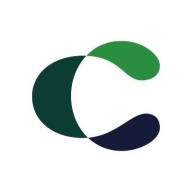

OWASP Zap and Contrast Security Assess compete in the application security testing category. Contrast Security Assess has the upper hand due to its comprehensive real-time threat detection capabilities, which many users find justifies its higher cost.
Features: OWASP Zap is recognized for its effective vulnerability scanning, strong community support, and cost-effectiveness. It enables users to identify security loopholes efficiently. Contrast Security Assess integrates seamlessly into existing development workflows, offers continuous security assessments, and provides valuable real-time security insights, making it a popular choice for maintaining robust security measures.
Room for Improvement: Users suggest OWASP Zap could enhance its reporting features, offer better user guidance, and streamline the overall user experience. Contrast Security Assess, while functional, could reduce the complexity of some advanced features, modify its onboarding process, and improve initial user training to help new users navigate its capabilities more easily.
Ease of Deployment and Customer Service: OWASP Zap users find deployment straightforward, supported by extensive community resources and documentation, though its support services are limited. Contrast Security Assess requires a more complex deployment but benefits from dedicated and responsive customer support, providing comprehensive assistance throughout the process.
Pricing and ROI: OWASP Zap is often considered a budget-friendly option due to its no-cost setup. Contrast Security Assess involves higher setup costs but offers a significant return on investment through continuous and proactive security monitoring, which users find valuable in maintaining a strong security stance.
| Product | Market Share (%) |
|---|---|
| OWASP Zap | 4.5% |
| Contrast Security Assess | 0.6% |
| Other | 94.9% |


| Company Size | Count |
|---|---|
| Small Business | 2 |
| Midsize Enterprise | 3 |
| Large Enterprise | 6 |
| Company Size | Count |
|---|---|
| Small Business | 10 |
| Midsize Enterprise | 11 |
| Large Enterprise | 21 |
Contrast Security is the world’s leading provider of security technology that enables software applications to protect themselves against cyberattacks, heralding the new era of self-protecting software. Contrast's patented deep security instrumentation is the breakthrough technology that enables highly accurate assessment and always-on protection of an entire application portfolio, without disruptive scanning or expensive security experts. Only Contrast has sensors that work actively inside applications to uncover vulnerabilities, prevent data breaches, and secure the entire enterprise from development, to operations, to production.
OWASP Zap is a free and open-source web application security scanner.
The solution helps developers identify vulnerabilities in their web applications by actively scanning for common security issues.
With its user-friendly interface and powerful features, Zap is a popular choice among developers for ensuring the security of their web applications.
We monitor all Static Application Security Testing (SAST) reviews to prevent fraudulent reviews and keep review quality high. We do not post reviews by company employees or direct competitors. We validate each review for authenticity via cross-reference with LinkedIn, and personal follow-up with the reviewer when necessary.